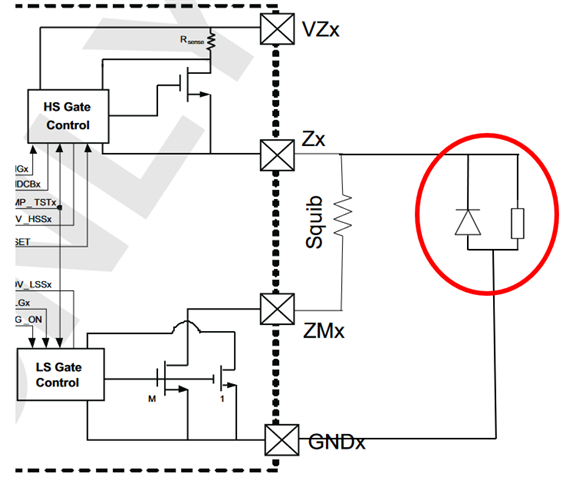The DUT has volage supply but is without ground connection. The uC on the DUT is not flashed with software. Now we are applying a short to GND at the Zx pin of the TPIC71004. The voltage of the plane is at 1.6 V higher compared to minus of power supply (I know that we are out of the range of the absolute maximum ratings of the Zx pin). A current is flowing in to the Zx pin (about 25 mA). And there is a voltage difference between Zx and ZMx pin. Do you have any suggestions to avoid this?
I have red the NOTE “Applying a negative voltage on the Zx pins will cause current flow through the squib via the body diode of the low side switch even if the low side switch is commanded OFF. This can lead to inadvertent deployment (firing).“ Is there any possibility with external components around this behaviour.



